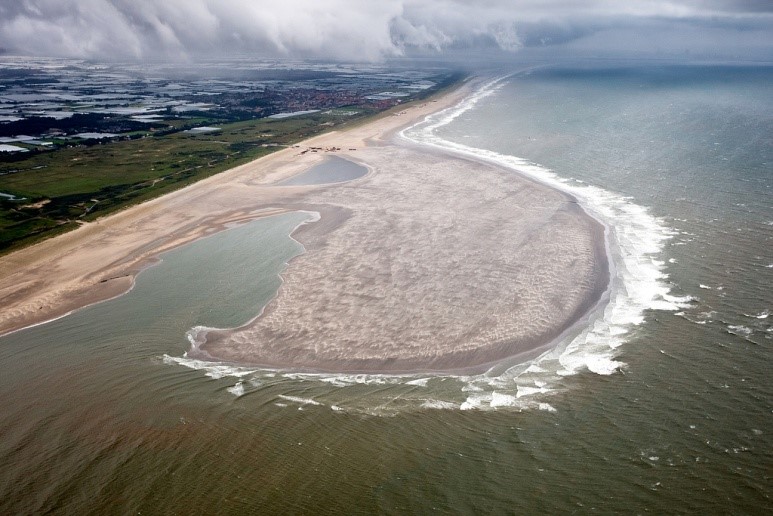Towards scale-resolving policies
Downloads
DOI:
https://doi.org/10.47982/rius.7.128Abstract
By definition, Building with Nature solutions utilise services provided by the natural system and/or provide new opportunities to that system. As a consequence, such solutions are sensitive to the status of, and interact with the surrounding system. A thorough understanding of the ambient natural system is therefore necessary to meet the required specifications and to realise the potential interactions with that system. In order to be adopted beyond the pilot scale, the potential impact of multiple BwN solutions on the natural and societal systems of a region need to be established. This requires a ‘reality check’ of the effectiveness of multiple, regional-scale applications in terms of social and environmental costs and benefits. Reality checking will help establish the upscaling potential of a certain BwN measure when addressing a larger-scale issue. Conversely, it might reveal to what extent specific smaller-scale measures are suitable in light of larger regional-scale issues. This paper presents a stepwise method to approach a reality check on BwN solutions, based on the Frame of Reference method described in a companion paper (de Vries et al., 2020), and illustrates its use by two example cases. The examples show that a successful pilot project is not always a guarantee of wider applicability and that a broader application may involve dilemmas concerning environment, policy and legislation.
How to Cite
Published
Issue
Section
License
Copyright (c) 2021 Mindert de Vries, Mark van Koningsveld, Stefan Aarninkhof, Huib de Vriend

This work is licensed under a Creative Commons Attribution 4.0 International License.
References
Bridges, T. S., Bourne, E. M., King, J. K., Kuzmitski, H. K., Moynihan, E. B., & Suedel, B. C. (2018). Engineering With Nature: an atlas [special report]. https://doi.org/10.21079/11681/27929
Brown, J. M., Phelps, J. J. C., Barkwith, A., Hurst, M. D., Ellis, M. A., & Plater, A. J. (2016). The effectiveness of beach mega-nourishment, assessed over three management epochs. Journal of Environmental Management, 184, 400–408. https://doi.org/10.1016/j.jenvman.2016.09.090
Chen, Z., Li, B., Zhong, Y., & Chen, J. (2004). Local competitive effects of introduced Spartina alterniflora on Scirpus mariqueter at Dongtan of Chongming Island, the Yangtze River estuary and their potential ecological consequences. Hydrobiologia, 528(1–3), 99–106. https://doi.org/10.1007/s10750-004-1888-9
Collas, F. P. L., Buijse, A. D., van den Heuvel, L., van Kessel, N., Schoor, M. M., Eerden, H., & Leuven, R. S. E. W. (2018). Longitudinal training dams mitigate effects of shipping on environmental conditions and fish density in the littoral zones of the river Rhine. Science of The Total Environment, 619–620, 1183–1193. https://doi.org/10.1016/j.scitotenv.2017.10.299
de Jong, M. F., Baptist, M. J., Lindeboom, H. J., & Hoekstra, P. (2015). Short-term impact of deep sand extraction and ecosystem-based landscaping on macrozoobenthos and sediment characteristics. Marine Pollution Bulletin, 97(1–2), 294–308. https://doi.org/10.1016/j.marpolbul.2015.06.002
de Vriend, H.J., & Van Koningsveld, M., (2012). Building with Nature. Thinking, acting and interacting differently. EcoShape
de Vriend, H. J., van Koningsveld, M., Aarninkhof, S. G. J., de Vries, M. B., & Baptist, M. J. (2015). Sustainable hydraulic engineering through building with nature. Journal of Hydro-Environment Research, 9(2), 159–171. https://doi.org/10.1016/j.jher.2014.06.004
de Weerdt, B.J. (2015). Effectiveness of the Sand Engine: An objective evaluation with the Frame of Reference approach [ MSc thesis]. Delft University of Technology, The Netherlands. http://resolver.tudelft.nl/uuid:e786163a-8e01-46b8-9bb6-cbef503b534d
Delta Committee. (2008). Working together with water; a living land builds for its future [technical report]. Hollandia printing. http://www.deltacommissie.com/doc/deltareport_full.pdf.
Groen, O.D. (2019). Nature-enhancing design of scour protection for monopiles in the North Sea [MSc thesis]. Delft University of Technology, The Netherlands. http://resolver.tudelft.nl/uuid:f612bc90-785c-4706-90e6-b7116f4b8077
Kamermans, P., Walles, B., Kraan, M., van Duren, L., Kleissen, F., van der Have, T., Smaal, A., & Poelman, M. (2018). Offshore Wind Farms as Potential Locations for Flat Oyster (Ostrea edulis) Restoration in the Dutch North Sea. Sustainability, 10(11), 3942. https://doi.org/10.3390/su10113942
Laboyrie, H.P., van Koningsveld, M., Aarninkhof, S.G.J., van Parys, M., Lee, M., Jensen, A., Csiti, A. & Kolman, R. (Eds.). (2018). Dredging for Sustainable Infrastructure. CEDA/IADC. https://www.iadc-dredging.com/ul/cms/fck-uploaded/documents/contents-dredging-for-sustainable-infrastructure.pdf
Lengkeek, W., Didderen, K., Teunis, M., Driessen, F., Coolen, J. W. P., Bos, O. G., Vergouwen, S. A., Raaijmakers, T. C., De Vries, M. B., & Van Koningsveld, M. (2017). Eco-friendly design of scour protection: potential enhancement of ecological functioning in offshore wind farms: Towards an implementation guide and experimental set-up [report]. Bureau Waardenburg; No. 17-001. https://edepot.wur.nl/411374
Luijendijk, A., & van Oudenhove, A., (Eds). (2019). The Sand Motor: a nature-based response to climate change; findings and reflections of the interdisciplinary research program NatureCoast. TU Delft Open. https://pure.tudelft.nl/portal/files/53666598/2019_Luijendijk_van_OUdenhoven_eds_The_Sand_Motor_A_Nature_Based_Response_to_Climate_Change_NATURECOAST.pdf




